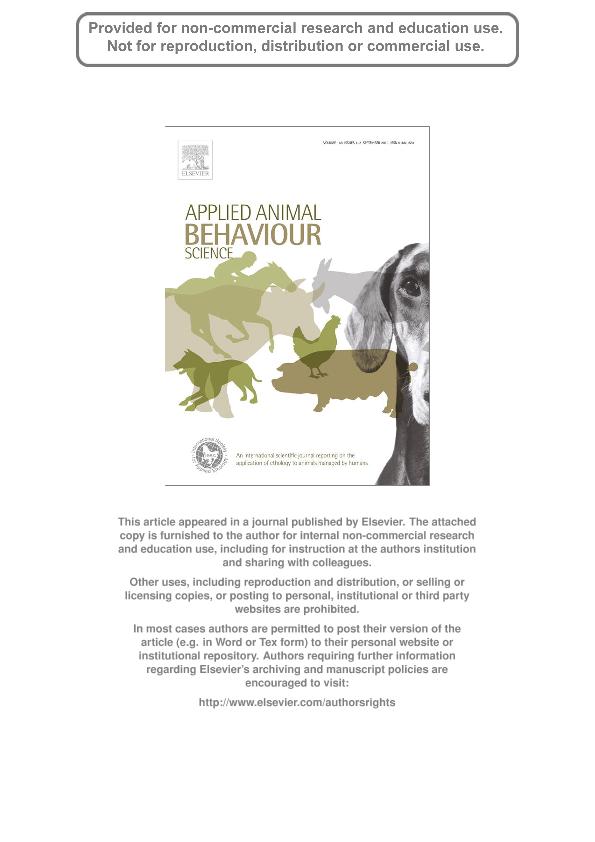Artículo
The importance of diet choice on stress-related responses by lambs
Fecha de publicación:
09/2013
Editorial:
Elsevier Science
Revista:
Applied Animal Behaviour Science
ISSN:
0168-1591
Idioma:
Inglés
Tipo de recurso:
Artículo publicado
Clasificación temática:
Resumen
Farm animals are commonly restricted to a reduced array of foods, like total mixed rations or pastures with low species diversity. Under these conditions, animals are less likely to satisfy their specific and changing nutrient requirements. In addition, foods and flavors eaten too frequently or in excess induce sensory-specific satiety and can cause aversions. Thus, sensory and postingestive monotony may reduce animal welfare. We hypothesized that exposure to monotonous diets, even if they are considered to be nutritionally balanced, is stressful for sheep. Twenty-four 2-month-old male Corriedale lambs were randomly assigned to two experimental groups. One group (diversity treatment, DIV) received a free choice of four-way combinations of two foods with low and two foods with high protein/energy ratios from an array of seven foods (three foods high in protein/energy ratio: soybean meal, sunflower meal, and alfalfa pellets, and four foods low in protein/energy ratio: barley grain, oat grain, milo grain, and corn grain). The other group (monotony treatment, MON) was fed a balanced ration containing all foods offered to lambs in DIV. Foods were offered in four individual buckets and exposure lasted 55 days. During exposure, feeding behavior was assessed, and blood samples were taken for a complete blood cell count and to determine serum cortisol concentration. Lambs in MON showed greater cortisol levels (31.44 vs. 19.90 ± 3.30 nmol/L [means ± SEM]; P = 0.025) and a greater neutrophil to lymphocyte ratio (0.37 vs. 0.26 ± 0.05; P = 0.044) than lambs in DIV. Lambs in DIV spent a lower proportion of time eating (0.38 vs. 0.49 ± 0.02; P < 0.001) and showed a greater intake rate (17.73 vs. 14.09 ± 1.26 g/min, P < 0.044) than lambs in MON. They also showed a greater proportion of time lying (0.44 vs. 0.36 ± 0.03; P = 0.049) and greater activity (0.047 vs. 0.035 ± 0.003; P = 0.003) than lambs in MON. However, final body weight and the average daily weight gain were not affected by treatment (P > 0.05). Our results showed that restricting lambs? dietary breadth produced changes in blood and behavioral parameters previously shown to be indicative of stress in sheep. The importance of incorporating food choice as an alternative practice to overcome stress associated to the traditional livestock feeding management is discussed.
Palabras clave:
Diet Selection
,
Stress
,
Sheep
,
Cortisol
,
Animal Welfare
Archivos asociados
Licencia
Identificadores
Colecciones
Articulos(CERZOS)
Articulos de CENTRO REC.NAT.RENOVABLES DE ZONA SEMIARIDA(I)
Articulos de CENTRO REC.NAT.RENOVABLES DE ZONA SEMIARIDA(I)
Citación
Catanese, Francisco Hernan; Obelar, Marianela; Villalba, Juan Jose; Distel, Roberto Alejandro; The importance of diet choice on stress-related responses by lambs; Elsevier Science; Applied Animal Behaviour Science; 148; 1-2; 9-2013; 37-45
Compartir
Altmétricas




